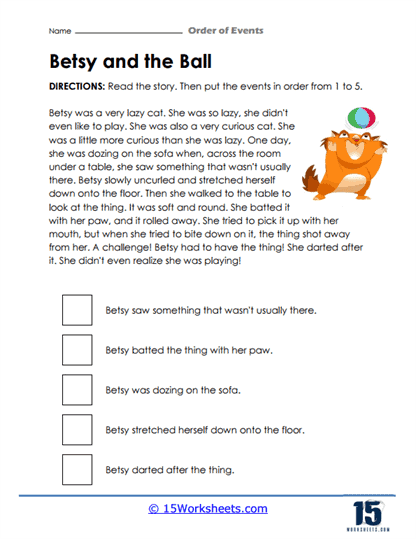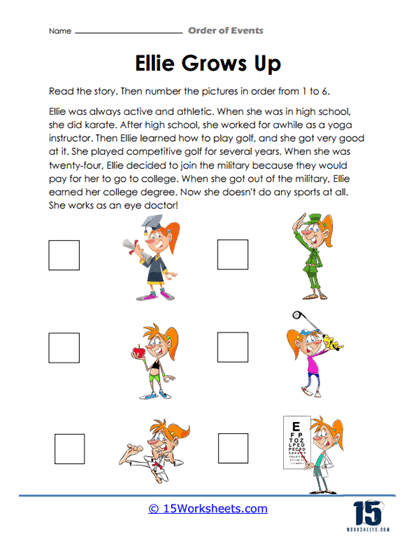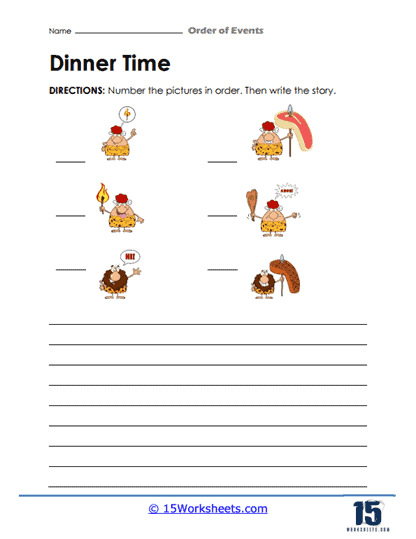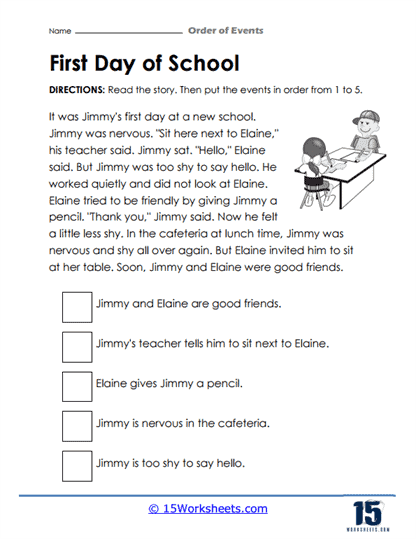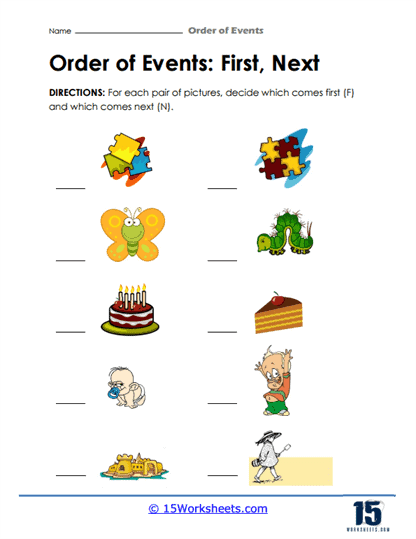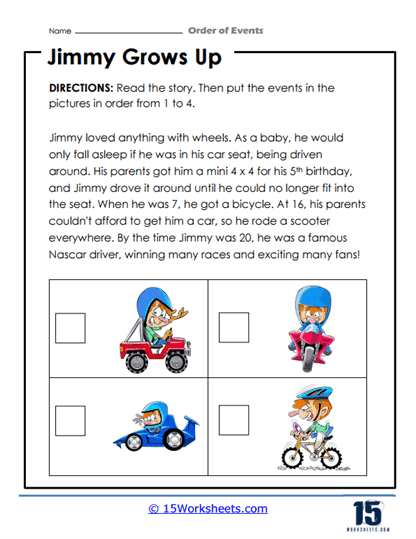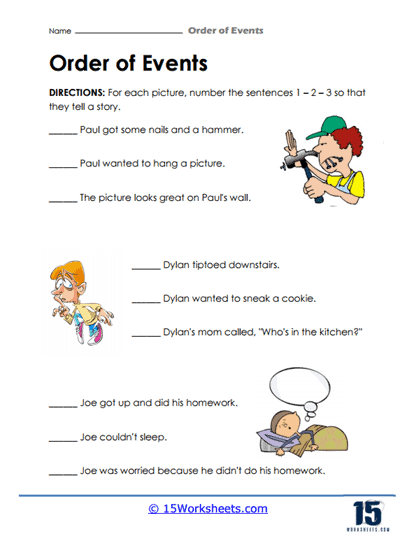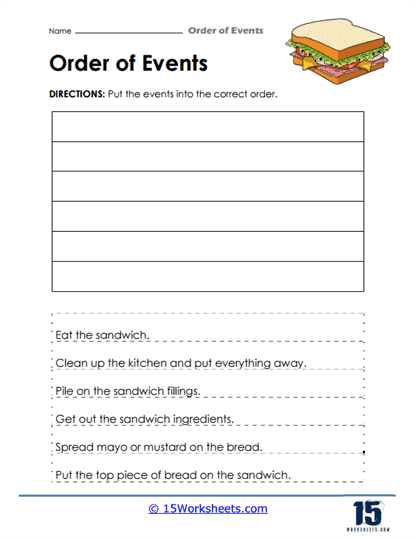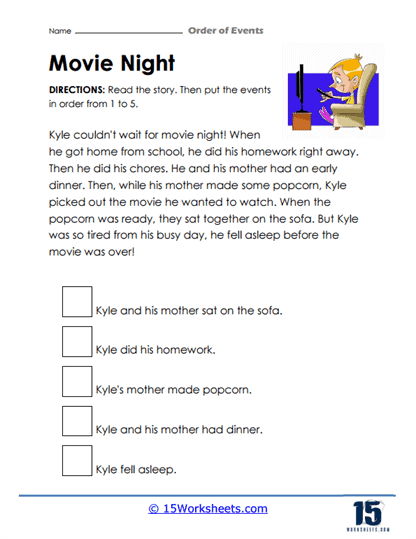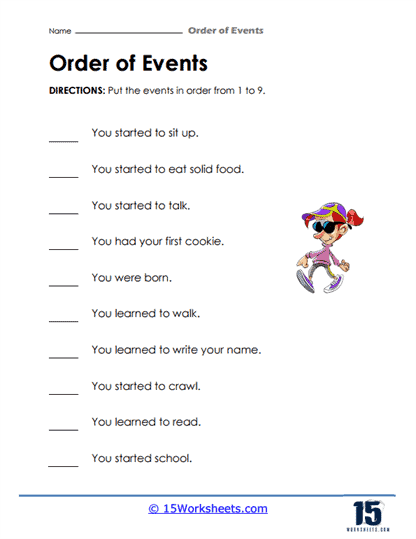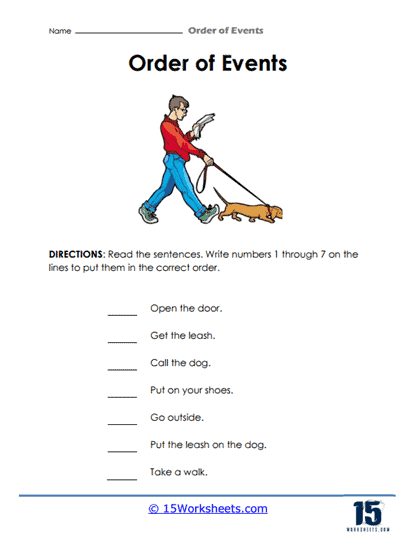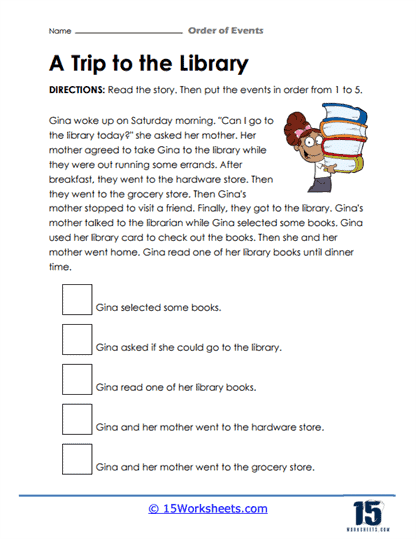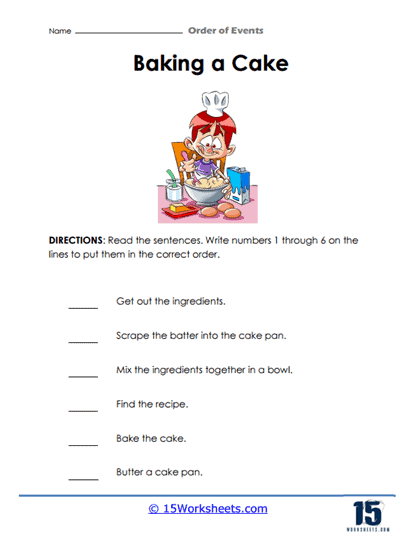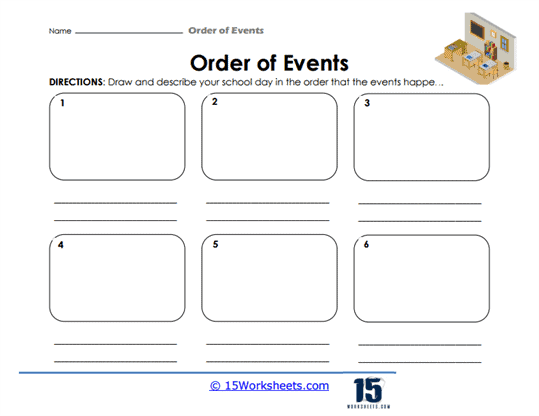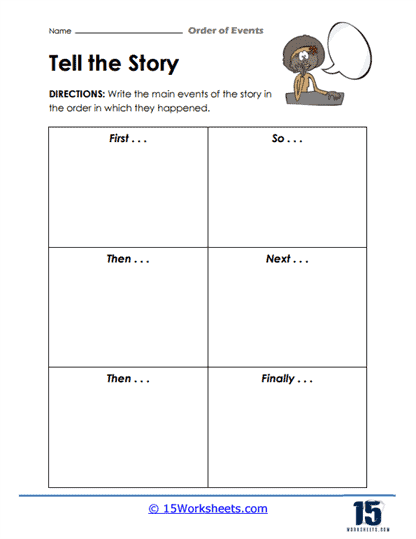Order of Events Worksheets
All About These 15 Worksheets
This collection of worksheets will help you understand sequencing, or the order in which events occur in a reading passage. They contain a series of events that are jumbled and must be placed in the correct sequence by the student. They can also have you match images that indicate events in what you have or will read.
They are themed on a different variety of topics, including daily life events (like getting ready for school), stories or fairy tales, historical events, scientific processes (like the life cycle of a butterfly), or even math problems that require step-by-step solving. This type of work is a key skill that aids in reading comprehension, narrative writing, understanding historical timelines, scientific processes, and more.
Keywords to Look For That Tell Your the Order of Events
When reading a passage, there are several types of words and phrases, often referred to as “transitional words” or “temporal words”, that can help you understand the order of events. Knowing and understanding these transitional words and phrases can greatly assist in following the progression of events or ideas within a text. Here are some examples:
Sequence Words – These words show the order of events as they happen.
- First, second, third, etc.
- Before, after
- Next, then, afterwards
- Finally, lastly
Cause and Effect Words – These words show why something happened.
- Because, since, therefore, thus
- As a result, consequently, hence
Comparison and Contrast Words – These words show how things are alike or different.
- Similarly, likewise (for comparison)
- But, however, on the other hand, whereas (for contrast)
Time Words – These words show when events happened.
- Now, today, tomorrow, yesterday
- Meanwhile, during, while
- Soon, later, afterward
Additional Information Words – These words add more details or events.
- Also, and, furthermore, in addition, moreover.
Concluding Words – These words signal that the text or an idea is coming to an end.
- In conclusion, to sum up, finally
How to Expand On This Skill In The Classroom
Teaching the concept of sequence of events can be engaging and interactive. Here are several strategies that you can utilize:
Start with Everyday Activities
Discuss a common daily routine, such as getting ready for school or baking a cake. Ask students to list the steps in order and discuss the importance of each step occurring at the right time. Teach students common transitional words and phrases that indicate sequence (like first, next, then, finally). Provide exercises for students to practice using these words in their own writing.
Picture Books, Short Stories, and Story Maps
Picture books and short stories are great tools for teaching sequencing because they often have clear, linear plots. After reading, ask students to retell the story in their own words, focusing on the sequence of events. Create a visual representation of a story’s sequence. This could be a simple linear timeline, a circular “story wheel,” or a more complex flowchart. This helps visual learners see the sequence of events.
Sequencing and Writing Prompts
Games can make learning fun and engaging. For instance, you could write the sequence of events from a story on individual cards and ask students to arrange the cards in order. Encourage students to write their own short narratives, paying special attention to the sequence of events. This could be a personal narrative or a creative story.

